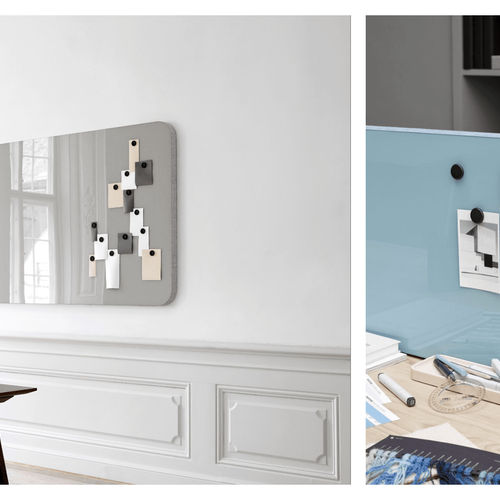Five world-renowned architects who continue to amaze
Lijstjes maken is nooit gemakkelijk. Toegegeven, het is zelfs oneerlijk, omdat je altijd wel iemand vergeet en dus oneer aandoet. Dat is zeker zo als je beroemde architecten gaat rangschikken: het is gewoon onmogelijk. Toch is de invloed van sommigen zo groot dat ze een aparte vermelding verdienen. Deze vijf hedendaagse grootmeesters vormen ook voor ons een constante inspiratiebron.
Vincent Van Duysen
We start in Belgium. Vincent Van Duysen is perhaps the best known Belgian architect alive today. An absolute icon, lauded for his timeless essentialism, heavily influenced by modernist luminaries such as Ludwig Mies Van Der Rohe, Louis Kahn and Luis Barragán. Van Duysen's work is pure, serene and contemplative: his designs never shout, they whisper.
One of his most famous buildings may well be his own home in the centre of Antwerp. It frequently shows up on blogs, Instagram, Pinterest, and suchlike. In addition, in recent years the Lokeren native has added Graanmarkt 13 in Antwerp, the flagship store of Alexander Wang in London and the department store La Rinascente in Rome to his impressive CV.
What's more, Van Duysen does not limit himself to architecture, he also works as a product designer for some of the world's leading design labels. For example, since 2016 he has been creative director of design house Molteni and Co, and you can find his designs in the collections of Flos, Poliform, Fantini and When Objects Work, among others.
Rem Koolhaas
Perhaps more of a visionary than a builder. Former journalist Rem Koolhaas is without a doubt one of the most talented and decorated Dutch architects of all time. He has realised buildings all over the world, but his body of work also includes books and exhibitions. In 2000, he even won the Pritzker Prize, the so-called Nobel Prize for Architecture. One more reason to include him in our list of renowned architects.
In 1975, Koolhaas founded the architectural firm Office for Metropolitan Architecture (OMA), along with Madelon Vriesendorp and Elia and Zoe Zenghelis. The firm was long known for its "paper architecture": OMA built up a solid reputation from its lectures, competitions and publications, rather than for its buildings. That changed in 1992. The design for the Kunsthal Rotterdam put Koolhaas and his team permanently on the world map.
Since then, the Dutch architect has become one of the most important builders and therefore famous architects of his day. From De Rotterdam, the largest building in the Netherlands, to the headquarters of China Central Television in Beijing and the Seattle Central Library, these are the daily topics of conversation for architecture enthusiasts around the world.
David Chipperfield
A name that rolls off the tongue. David Chipperfield is among the very best in the world and is known for his innovative, almost symbolic architecture, strongly grafted onto the historical background of a place or building. He has won more than 100 international awards for his work in building and planning.
Chipperfield has offices in London, Berlin, Milan and Shanghai. His field of work extends from Europe through Japan to the US, with a strong focus on the cultural sector. The Englishman is primarily known for building museums. His designs include the River Rowing Museum in Oxfordshire and the Neues Museum in Berlin, which won him the EU Prize for Contemporary Architecture in 2011. Other important works include the pavilion of the America's Cup in Valencia, the headquarters of Toyota in Japan and various stores for Dolce & Gabbana around the world.
The good news is that you can also admire Chipperfield's work in Belgium. For example, he designed the residential tower Hertog I, which will be built on the Hertogensite in Leuven in 2023. He was also involved in The Grand in Nieuwpoort-Bad, and was the architect of one of the Westkaai towers in Antwerp. He even designed a house in Deurle.
Tadao Ando
You can't mention modern architecture without highlighting the Japanese contribution. One name always comes to the fore: Tadao Ando, another Pritzker Prize winner, but above all a self-taught and minimalist genius.
Following a career as an amateur boxer and with no formal training, he set up his own architectural firm in 1969. Inspired by Japanese construction methods and the modernism of Le Corbusier, among others, he developed his own refined brutalism: monolithic concrete houses with simple geometric forms that are in total harmony with nature. Light in particular plays a crucial role in his architecture: the way it reflects off the smooth concrete walls always heralds a unique encounter between nature and man. Buildings such as the Church of Light and Koshino House are the best known examples.
Japan is the best place to admire Ando's work. But there are also a few buildings of his in Europe. In Germany, for example, there is the Foundation Langen in the Ruhr area and the Vitra Conference Building in Weil am Rhein. In Treviso, Ando built La Fabbrica for the Benetton family. And in France, he had a hand in part of the Château La Coste winery and a reflection pavilion in the UNESCO building in Paris.
John Pawson
If 'less is more' is your thing, you need to check out John Pawson. The British architect and designer is pretty much the standard-bearer of minimalism, a style that is nowadays mentioned in the same breath as his name. Whether for a home, boat, monastery or cricket pavilion, all his designs are bathed in white light and space.
Some of his best-known public buildings include the prestigious flagship store for Calvin Klein in New York and the Trappist monastery Novy Dvur in the Czech Republic. Both are paragons of the visual simplicity, perfect proportions, noble materials and expressive details that are part of his signature.
In Belgium, Pawson is best known for his collaborations with several Belgian design brands. Around 25 years ago, Pawson designed his first kitchen for Obumex. For 'When Objects Work', he designed small objects including platters, bowls and cutlery. And he designed a collection of pots and pans for Demeyere. All in the same pared-down style that typifies his work. And that brings us to the end of our 5 renowned architects.



















